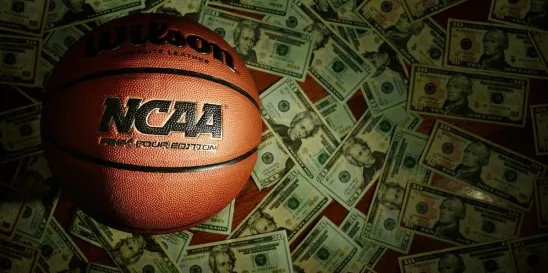On December 5, 2023, NCAA President Charlie Baker sent a letter to over 350 member schools, which proposed rules that would permit Division I member schools to pay their athletes for the first time, in ways not tied to educational resources.
The letter outlined a broad “forward-looking” framework needed to sustain the best elements of the student-athlete experience, build on the investments that have changed the trajectory of women’s sports, and enhance the athletic and academic experience for student-athletes.
In order to “deliver this framework” Baker proposed three fundamental changes:
- First: permit all Division I colleges and universities to offer student-athletes “any level of enhanced educational benefits they deem appropriate.”
- Second: rules should be changed to permit any Division I school to enter into name, image, likeness (NIL) licensing opportunities with their student athletes.
- Third: proposed the creation of a subdivision comprised of institutions that would invest in their student-athletes. The institutions in this subdivision would be required to:
- (1) (within the framework of Title IX) invest at least $30,000 annually into an enhanced educational trust fund for at least half of the institution’s eligible student-athletes, and
- (2) commit to work collaboratively with peer institutions in this subdivision in order to create rules that may differ from the rules in place for the rest of Division I. These rules may include, but are not limited to, scholarship commitment and roster size, recruitment, transfers or NIL.
Baker noted that the first two changes seek to enhance the financial opportunities available to all Division I student-athletes. Additionally, the first two changes will help to level the playing field between men and women student-athletes, as schools must abide by existing gender equity regulations in their athletic program investment decisions. As it pertains to the third fundamental change, as it stands now, the NCAA would permit schools to choose who, when, and how their student-athletes receive the trust fund money. Importantly, the NCAA does not intend to require that an athlete finish their degree before they have access to the trust fund.
In short, for the schools that choose to adopt these rules, these fundamental changes have the effect of permitting Division I schools to pay their student athletes in ways not tied to educational resources. Baker’s letter is seen by the NCAA as a model that Congress may use should it choose to enact federal laws governing college sports. While there is no timeline as to when these proposed rules may be enacted, members and student-athletes are encouraged to provide the NCAA with feedback as the NCAA works to further develop this proposal. In order to adopt this proposal, NCAA schools must vote to adopt the changes.






 />i
/>i

